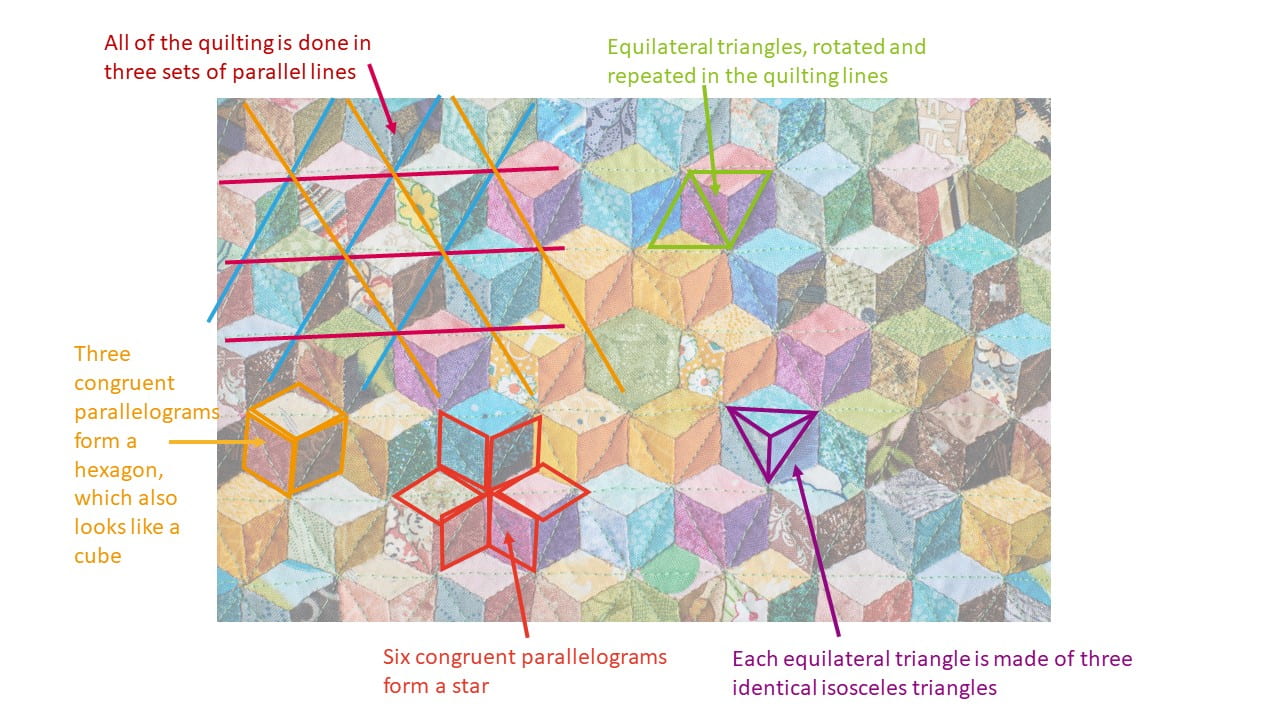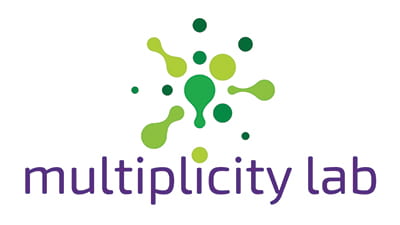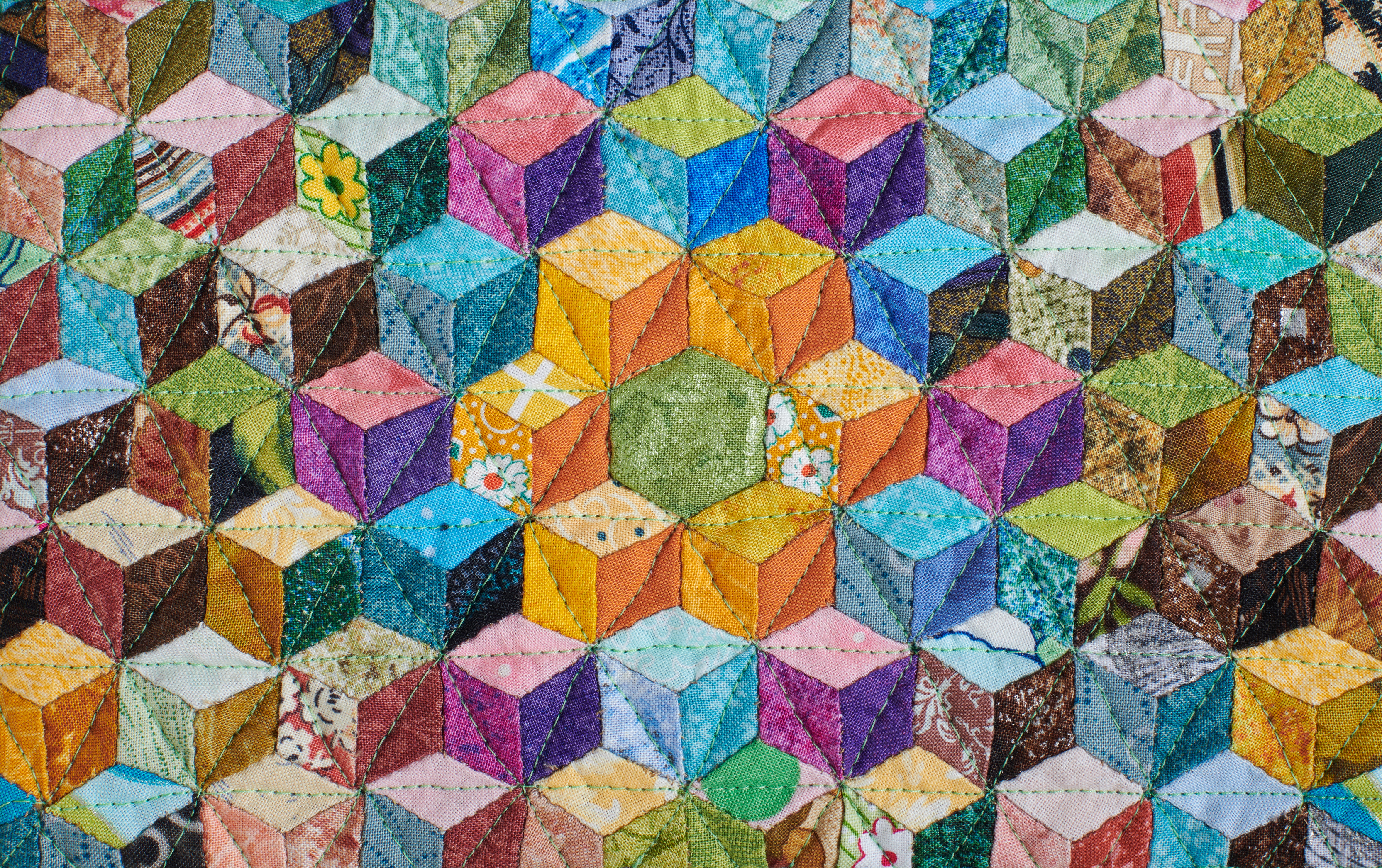Image of the Week: Quilting Patterns
January 9, 2022Quilting Patterns
We’ve looked at patterns all over the human world, often finding them in architecture and city planning, but few places are as rich in patterns as textiles. Fabrics are often designed to contain repeating patterns, even when they appear random. You may have to step back quite a way to see the structure in a fabric. Other times, it helps to move closer. Today we do just that by inviting you to take a close look at quilting patterns. Take a look at this week’s image: What patterns do you see?
Perhaps you noticed, this is actually a fairly simple quilting pattern, constructed of just one shape repeated across the surface through rotation. But there are different ways of seeing how these shapes come together – a what larger shapes they form. And then there are the patterns created by the quilting itself, the sewing done on top of the quilt to join its layers. Here are just a few patterns that you or your students might see:

Notice that these each for patterns while also being different ways of decomposing the two-dimensional space. Students may notice shapes that are the same, or congruent or equivalent, despite being rotated or reflected – depending on how you look at it. Here patterns, shapes, equivalence, transformations, and decomposition are all intertwined mathematical ideas.
Finally, the quilt artist has performed a neat illusion that you and your students may be familiar with by using color to suggest three-dimensional cubes using two-dimensional parallelograms. Some students may see this quilt through this three-dimensional lens as a stack or stairsteps of cubes.
This is just the beginning of quilting patterns – and textile patterns more broadly. Whatever culture you or your students come from, there is likely to be a textile pattern to explore. Invite students to look down at their own clothing, at the sheets on their beds, or the quilts of their grandparents and ask, What patterns do you see?
And we invite you to follow us on Twitter! Tweet us the fascinating ideas you students have about our activities or how you’re trying these activities in your space. We can’t wait to hear from you!
To multiplicity, cheers!
Jen Munson and the multiplicity lab group
Read the Archive
Get the Image of the Week
Each week we bring you a new image and activity you can do with your students tomorrow, and we spotlight a feature of the mathematical work that we think is important for students’ learning and your teaching.
Stay connected and see what's new.

